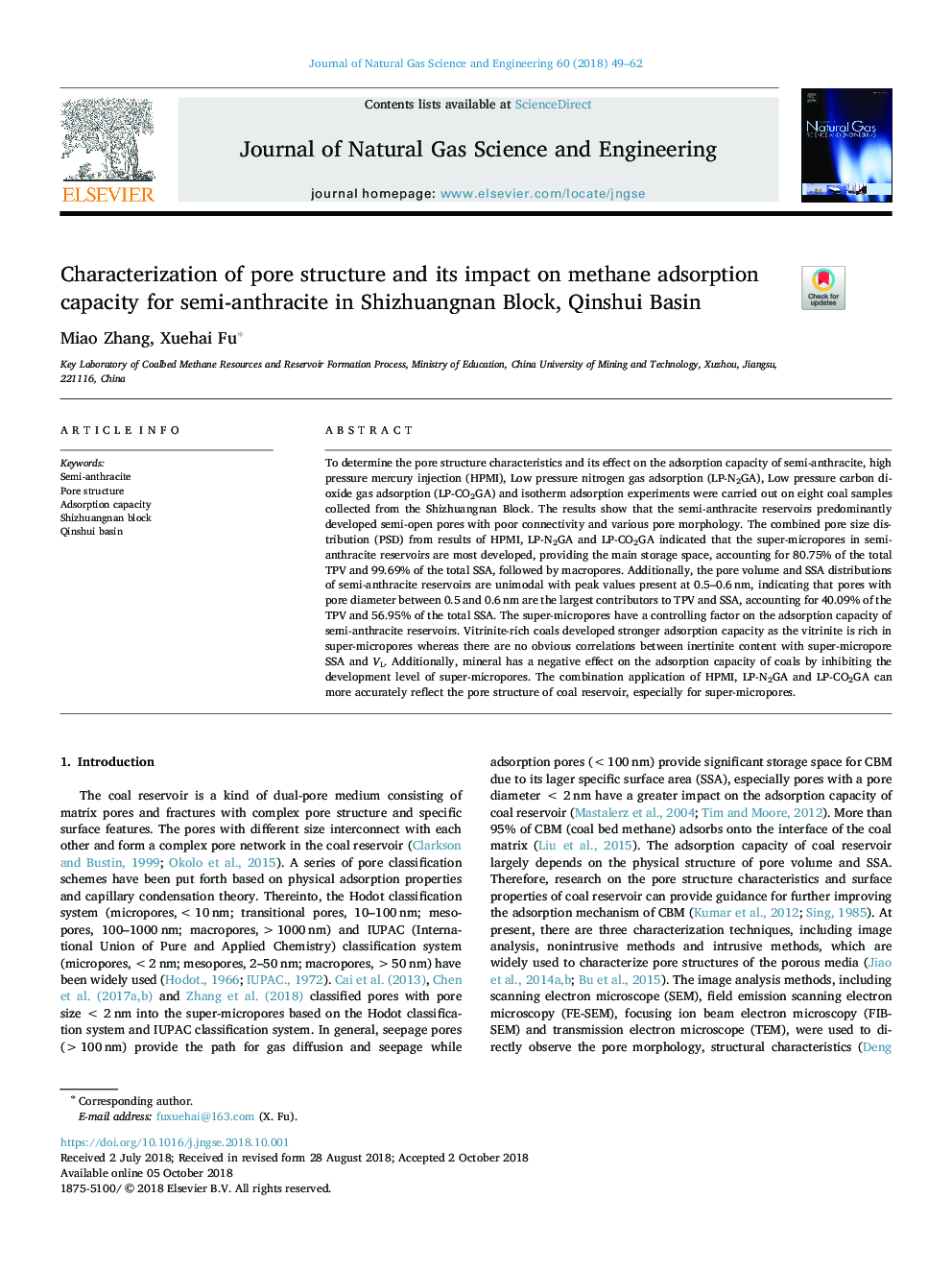| Article ID | Journal | Published Year | Pages | File Type |
|---|---|---|---|---|
| 11262885 | Journal of Natural Gas Science and Engineering | 2018 | 14 Pages |
Abstract
To determine the pore structure characteristics and its effect on the adsorption capacity of semi-anthracite, high pressure mercury injection (HPMI), Low pressure nitrogen gas adsorption (LP-N2GA), Low pressure carbon dioxide gas adsorption (LP-CO2GA) and isotherm adsorption experiments were carried out on eight coal samples collected from the Shizhuangnan Block. The results show that the semi-anthracite reservoirs predominantly developed semi-open pores with poor connectivity and various pore morphology. The combined pore size distribution (PSD) from results of HPMI, LP-N2GA and LP-CO2GA indicated that the super-micropores in semi-anthracite reservoirs are most developed, providing the main storage space, accounting for 80.75% of the total TPV and 99.69% of the total SSA, followed by macropores. Additionally, the pore volume and SSA distributions of semi-anthracite reservoirs are unimodal with peak values present at 0.5-0.6â¯nm, indicating that pores with pore diameter between 0.5 and 0.6â¯nm are the largest contributors to TPV and SSA, accounting for 40.09% of the TPV and 56.95% of the total SSA. The super-micropores have a controlling factor on the adsorption capacity of semi-anthracite reservoirs. Vitrinite-rich coals developed stronger adsorption capacity as the vitrinite is rich in super-micropores whereas there are no obvious correlations between inertinite content with super-micropore SSA and VL. Additionally, mineral has a negative effect on the adsorption capacity of coals by inhibiting the development level of super-micropores. The combination application of HPMI, LP-N2GA and LP-CO2GA can more accurately reflect the pore structure of coal reservoir, especially for super-micropores.
Related Topics
Physical Sciences and Engineering
Earth and Planetary Sciences
Earth and Planetary Sciences (General)
Authors
Miao Zhang, Xuehai Fu,
